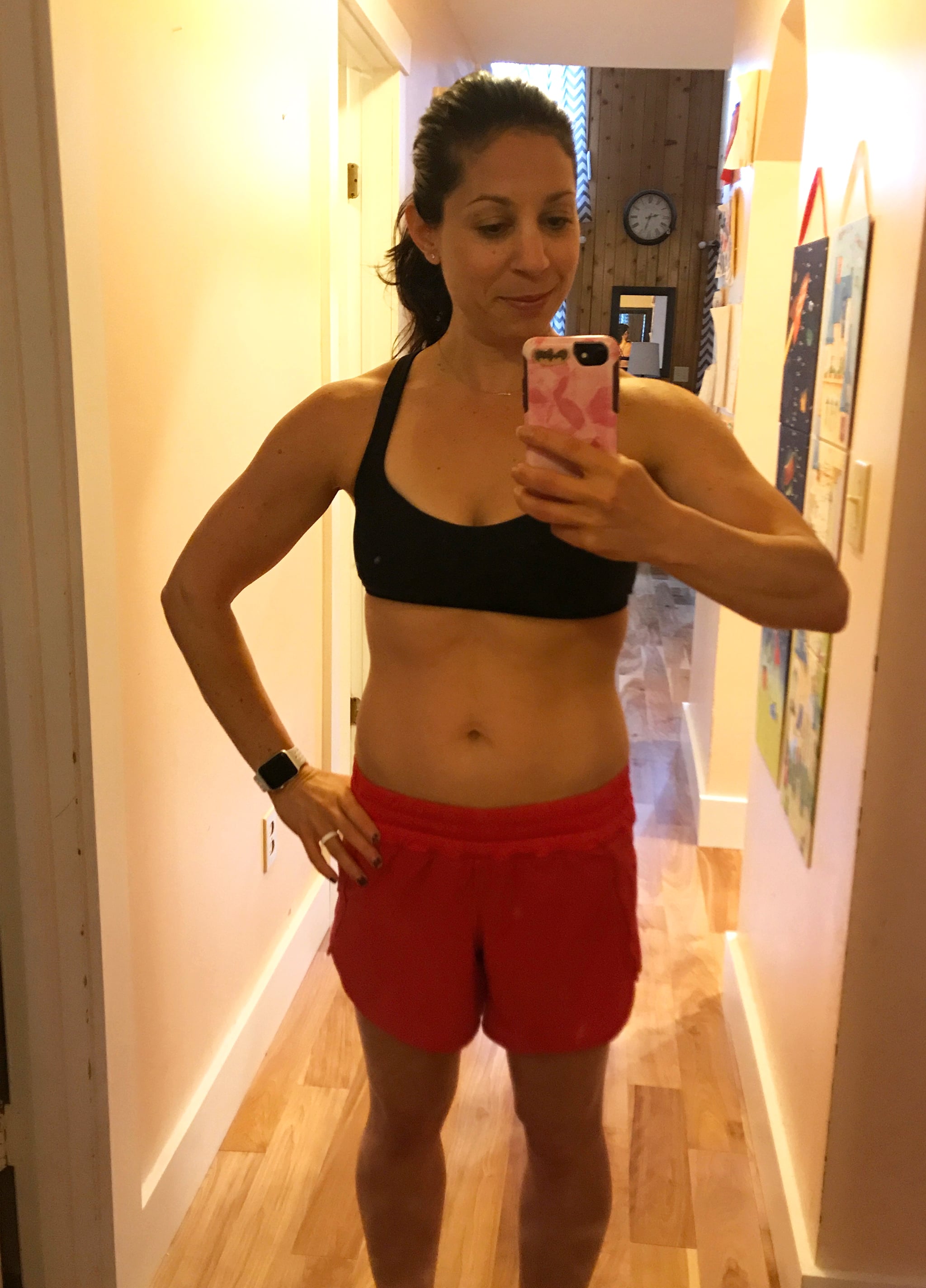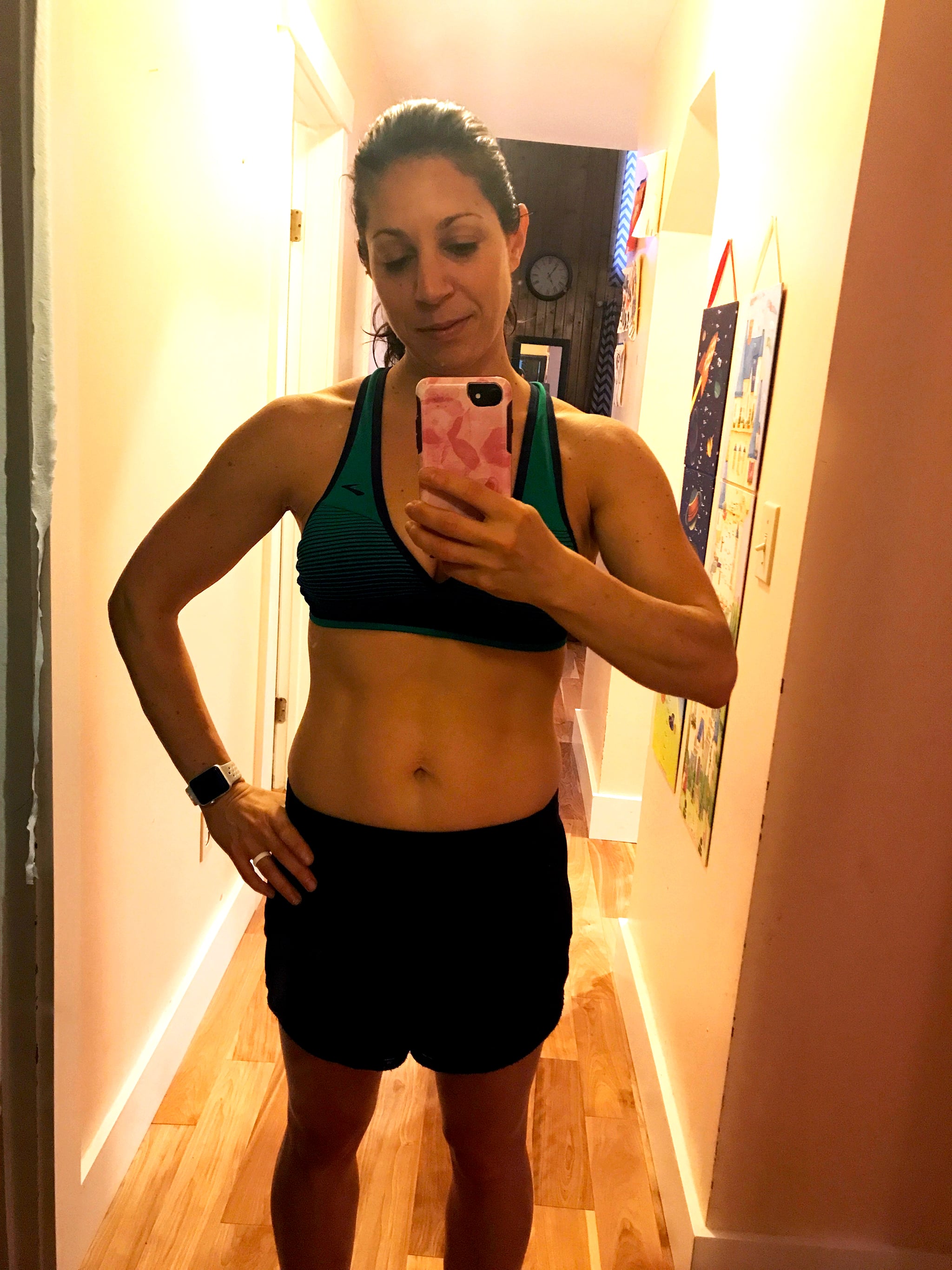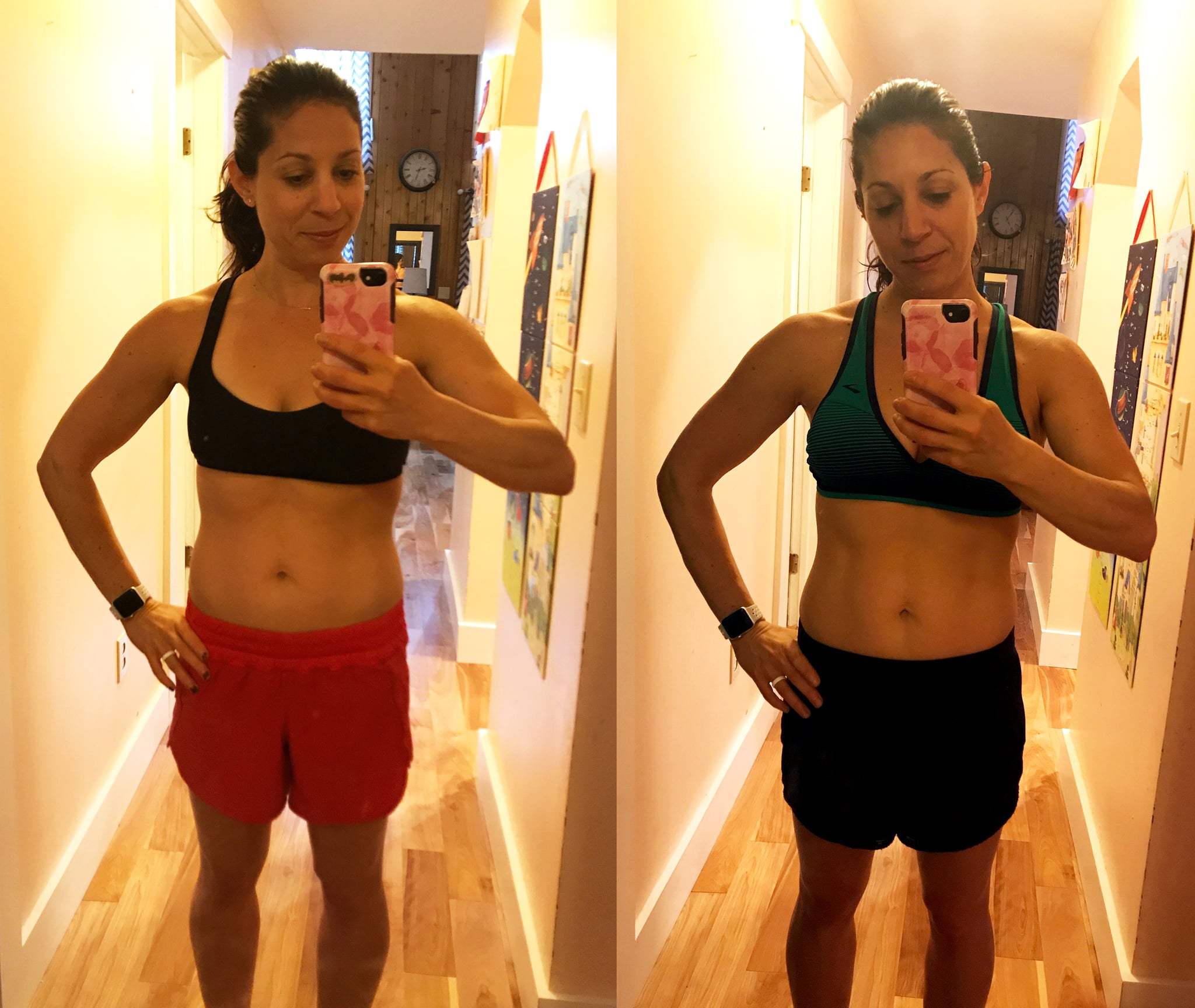I've been following the 16:8 intermittent fasting (IF) plan for over seven months now, which means I don't eat for 16 hours a day and only eat during the other eight hours. I find a lot of inspiration and information from watching YouTube videos on IF. Recently, I'd been seeing a lot about the Warrior Diet. It's a stricter form of intermittent fasting, during which you have a much shorter eating window of just four hours and then a fasting window of 20 hours.
Before Warrior Diet:
It seems crazy, right? Yet so many people rave about it. You're meant to obtain more mental clarity, increased energy, better digestion, reduced sugar cravings, and, for those looking for it, faster and better weight-loss and muscle definition results.
I never gave it serious thought, though. I mean, how can you only eat for four hours?! But one day, it happened accidentally. I meant to eat at noon as usual, but I was running around doing tons of errands, and it was 4 p.m. by the time I realized I was hungry and able to eat. If I could do it one day, I could do it for one week, right?
One of the best things I've experienced from intermittent fasting is getting a handle on my sugar cravings and food addiction. Not eating until noon was so freeing. It was beginning to help me not obsess about food all the time. I wanted to see how shortening my eating window to four hours would affect that.
Weren't You Insanely Hungry? (In Other Words: Didn't It Suck?!)
This surprised me, too, but no, I wasn't. I felt a little hungry around 10 a.m., so I'd have a cup of black coffee or green chai tea. The first couple of days I felt a little hungry around noon, since that's when I was used to eating. But by the fourth day that passed, and I instead noticed noon was the time of day when my mental clarity, focus, energy, and happiness really started kicking in.
How Did You Feel?
One thing I noticed about the Warrior Diet compared to the 16:8 plan is that eating eight hours a day still didn't entirely prevent me from overeating or wanting sugar, which always made me feel uncomfortably bloated. Eating just four hours a day made it impossible to overeat — my belly filled up so quickly and I felt so satisfied that I didn't want to eat more. Because I had no desire to overeat, I didn't feel bloated at night or in the morning.
Mentally speaking, before I started IF, I was always thinking about food, stressing about counting calories, feeling hungry and deprived, or feeling bad if I ate too much or ate "bad" foods. I realized I was so unhappy back then because all my hard work was just making me gain weight. Only eating in a four-hour window helped me think even less about food, and when I ate, I didn't feel restricted or bad about it. I wasn't expecting to feel such an emotional weight lifted, and this is what kept me inspired to stick with it.
After 2 Weeks on Warrior Diet:
What Did You Eat?
When 3:00/3:30 p.m. rolled around, I felt a subtle sense of hunger but wasn't completely famished. I craved mostly healthy foods and would eat a big tofu kale salad, leftovers, or a bowl of roasted tofu, sweet potatoes, and red peppers. I followed that with a banana, sometimes two, with raw almonds or cashews and plenty of water. Dinner was around 6:00 p.m., and I'd have whatever was on the menu: black bean burritos, avocado pasta with Trader Joe's meatless meatballs and steamed broccoli, lentil soup and bread, or veggie burgers with roasted veggies. If I felt like it, I'd eat a little dessert after. Sometimes it was some trail mix and fresh fruit . . . annnnd sometimes it was a vegan browniesundae.
I ate what I craved, and as much as I wanted. That was one of my favorite parts about the Warrior Diet. I never felt deprived. I was able to sit down to a huge plate of food and feel completely satisfied and not guilty because my meal was over 400 calories. Another surprising benefit was that my taste buds became so sharp that even basic foods like fresh mango tasted mind-blowingly delicious.
Were You Able to Work Out?
Yep, my 5:45 a.m. CrossFit classes still happened. I felt the same as I always do, but this shortened eating window made for amazing deep sleep, so I felt super rested and energized. I was still able to box jump and burpee as usual, and today I even got a personal record for my squat snatch. One thing I noticed was that from not feeling bloated, I felt lighter and more agile and just more excited to move my body.
Did You Lose Weight?
I was surprised that I lost about two pounds — I've been about the same weight for years! This doesn't seem major, especially since it's hard to tell from the before-and-after photos, but for me, it was all in my belly. I noticed zero bloating (zero!) and a flatter tummy. I've also noticed more muscle definition in my arms and thighs, but that's not just from the past two weeks; it's because I've been doing intermittent fasting for over seven months now.
Isn't It Bad For You Not to Eat All Day?
Someone expressed their concern to me that intermittent fasting is an eating disorder. I actually feel like it's the exact opposite. I feel more in control and have a healthier relationship with food than I ever had. I finally know what true hunger feels like and am learning to listen to my body to eat when I'm hungry and — this is the most important thing — to STOP when I'm full. I'm no longer overeating or obsessing about food, and I feel more free from the thoughts about how eating affects my weight.
Will You Keep Going?
I've been wondering this every single day over the past 14 days. Some days I'm like, "Hell, no!" I especially felt that way on the third and 13th days. But then on the other days I just felt so good; I felt like I wanted to keep this up.
There are two main reasons I've contemplated sticking with the Warrior Diet. One, not being bloated has been huge for me, since I have been struggling with that since July 2016. It's made me so self-conscious and uncomfortable — on my worst days, I felt really depressed about it. So to look down and see a flatter tummy and not feel pain makes me tear up; I'm so happy.
OK, so the one thing that was hard was the weekends. I had my best friend visiting on the sixth day, and we went out for brunch. Sipping on coffee while she ate pancakes was tough — I'm not gonna lie. But that's what's cool about choosing IF as a lifestyle. I can tailor it to meet my needs, which means sticking with it most days and being lenient about not fasting when I want to.And two, I can't get over how I'm not obsessing about food. Even when I begin my eating window, I'm not scarfing food down or craving sweets, and I'm notovereating. And during my fasting window, I'm not daydreaming about the food I'll eat. Restricting my diet for over 20 years and obsessing about weight loss really f*cked me up, and intermittent fasting feels like free therapy. It's slowly curing me of all my worries and detrimental body-negative thoughts.
I've loved the heightened benefits of the Warrior Diet vs. the 16:8 plan — I'm blown away that I haven't been famished all day and that I've been so energized. I'm over the moon that I'm feeling zero belly bloat because I'm not overeating all day long, and I love not obsessing about food.
I think I'm going to keep going! I'm not sure I'll be strictly Warrior-ing it up every single day. Maybe some days I'll have a five- or six-hour eating window. Some days I'll do 16:8, and, well, other days (like on the weekends), I'll wake up and hit up my local vegan bakery for a sticky bun and keep eating all day long.
Final Thoughts
If you're considering intermittent fasting, I definitely would not try the Warrior Diet right off the bat. I'd start with a 12-hour fasting window, not eating from, say, 7 p.m. to 7 a.m. Gradually increase the amount of time you're fasting by 30 to 60 minutes every few days. I took a few weeks to get on the 16:8 plan, so just ease your body into it, and you'll find more success. As always, chat with your doctor before making any serious changes to your diet.
Aside from jumping into IF too fast, avoid these other intermittent fasting mistakes, such as eating the wrong foods. Once you get into a rhythm, you'll love the benefits of weight loss, increased energy, and the lowered risk of disease and feel inspired to keep going. You just might inspire someone else to hop on the IF train, too!
Image Source: POPSUGAR Photography / Jenny Sugar



Comments
Post a Comment